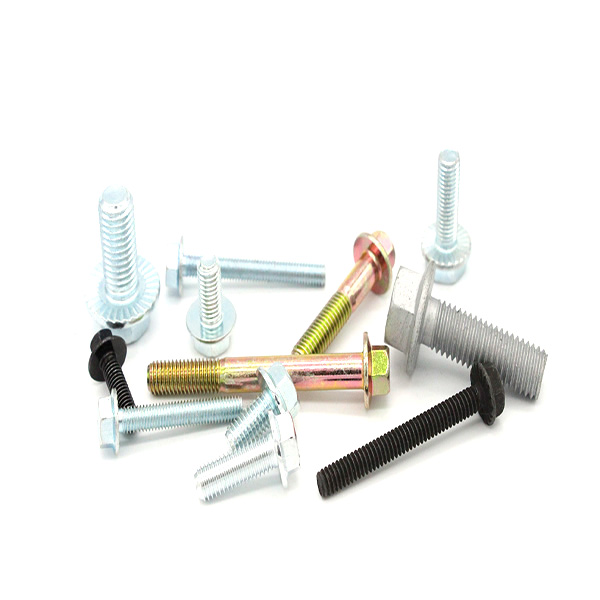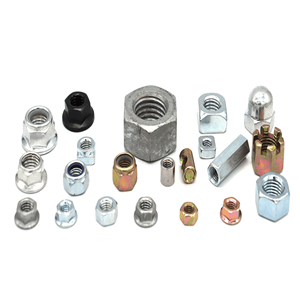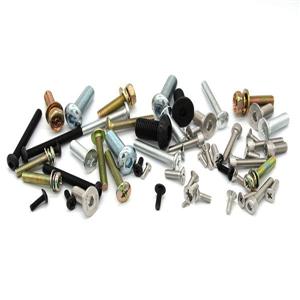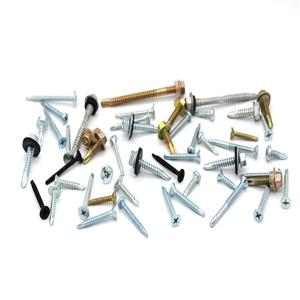Reasons and solutions for locking stainless steel bolts
stainless steel bolts are prone to lock-up when used, so what is the reason for the stainless steel bolts being locked? How to solve this situation? The following small series will tell you about the reasons and solutions for the locking of stainless steel bolts. I hope to help everyone.
Excessive locking force and low thermal conductivity of stainless steel tend to cause thread locking
1. During the rotation of the screw nut, the heat is generated by the friction. The thermal conductivity of the stainless steel is relatively low. When the generated pressure and heat damage the chromium oxide layer (the stainless steel is not easy to rust the oxide layer), the metal tooth pattern occurs directly. Blocking, plus the characteristics of stainless steel is soft, and then the phenomenon of adhesion. The greater the amount of heat generated by the locking force, the more likely the stainless steel of the screw mountain is to adhere.
2. When locking the stainless steel nut, the torque (locking force) must be greater than the friction of the stainless steel bolt and the stainless steel nut before the nut can be rotated. When the nut rotates down along the thread, the stainless steel bolt will stretch due to the reaction force. When the torque (locking force) exceeds the point of the screw (ie, the safe torque), the screw will remain strained and remain stretched. . When the screw is extended beyond its elastic range, it will be permanently deformed and the thread will lock.
The deflection angle of the threaded fit and the softer nature of the stainless steel tend to cause the locking of the stainless steel bolt
1. The cooperation of stainless steel bolts and stainless steel nuts belongs to the clearance fit, and has the international standard tolerance range of each implementation. Therefore, the internal and external threads are basically not on the same line when mating, and should be inclined to reduce the contact surface of the internal and external threads.
2. The larger the deflection angle of the stainless steel bolt and the stainless steel nut, the smaller the force-receiving area of the screw fit, and the more easily the tooth pattern is damaged.
3. The uneven force or inclination during the locking process maximizes the inclination of the central axis of the stainless steel bolt and the stainless steel nut, so that the stainless steel bolt and the stainless steel nut thread have no complete contact with the action surface, and the surface force is changed to a point. Force or force on each unit becomes larger.
4. The stainless steel bolt is softer than the carbon steel screw. If the iron scrap is rubbed off during the locking process, it will stick and not fall, thus interfering with the smooth entry and exit of the thread, causing the bottom of the tooth to die on the top of the crown.

stainless steel bolt lock solution
For the above reasons that are prone to lockup, use stainless steel bolts to pay attention to:
1. Keep the center axis of the stainless steel bolt and stainless steel nut perpendicular to the locked surface to reduce the deflection angle.
2. Try to use a manual wrench to slow down the locking speed, keep the thread clean, use lubricating oil to reduce the friction coefficient, reduce heat energy, and reduce adhesion.
3. Use a torque wrench or a socket wrench as much as possible to avoid excessive force and control the torque within the safe torque range.
4. the use of stainless steel anti-locking agent, the effect of reducing the lock ratio is obvious.
5. Choose a product with relatively high hardness and reduce the shear of the thread.
The above is about the reasons and solutions for the locking of stainless steel bolts. I hope everyone can understand the reasons and solutions for the locking of stainless steel bolts.




